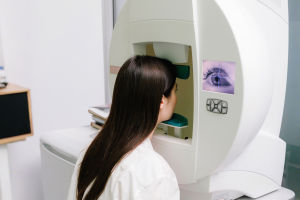Systemic lupus erythematosus (SLE) is an autoimmune disease where the immune system attacks healthy tissues, causing inflammation and damage across multiple systems.
Early identification of lupus symptoms is crucial for timely intervention to mitigate progression and damage.
Fatigue: The Most Prevalent and Persistent Symptom
Among the earliest and most consistent symptoms is profound, persistent fatigue that is distinct from normal tiredness. Unlike routine exhaustion, lupus-related fatigue is unrelenting and not fully relieved by rest, significantly impairing daily functioning. It stems from systemic inflammation, immune dysregulation, and possibly cytokine imbalances.
Articular Complaints: Fluctuating Joint Pain and Inflammation
Joint discomfort presents early in lupus, typically involving small joints such as those in the hands, wrists, and feet. This pain is often migratory, affecting different joints at different times, and is accompanied by prolonged morning stiffness exceeding 30 minutes. Unlike classical arthritis, lupus joint involvement usually does not cause severe joint destruction but includes episodes of swelling and tenderness linked to inflammation.
Cutaneous Features: The Diagnostic Signposts
The malar rash, commonly described as a butterfly-shaped facial rash spanning the cheeks and nose bridge, remains a hallmark early indicator. It frequently worsens after minimal UV exposure due to photosensitivity, a key lupus characteristic. Other dermatologic signs include red or scaly lesions elsewhere on sun-exposed areas and mucosal ulcers in the mouth and nose—often painless but persistent.
Unexplained Low-Grade Fever
A recurrent, mild fever without infectious cause is frequently noted among early lupus symptoms. These low-grade fevers, typically below 38.3°C, reflect systemic inflammation and immune hyperactivity. Because fever is a non-specific symptom, correlating it with other systemic signs assists in differential diagnosis.
Hair Thinning and Loss
Diffuse hair thinning or increased shedding is a common early complaint, distinct from acute patchy hair loss seen in other conditions. This occurs progressively and can affect scalp hair density visibly. Inflammation of hair follicles and immune-mediated damage contribute to this symptom.
Dr. Ronald van Vollenhoven, a leading rheumatologist, emphasizes: "Early lupus manifestations are subtle and protean, but fatigue paired with photosensitive skin changes should raise clinical suspicion and prompt thorough immunologic workup."
Furthermore, Dr. Mary J. Smith, a respected immunologist, notes: "The interplay of immune dysregulation and tissue-targeted damage defines lupus onset."
Identifying lupus in its nascent stages demands vigilance for a constellation of symptoms including persistent fatigue, intermittent joint inflammation, distinctive skin rashes, photosensitivity, and systemic signs like low-grade fever and neurocognitive alterations.
Early recognition and diagnosis can significantly improve long-term prognosis by facilitating immediate management to control inflammation and prevent irreversible tissue damage. Continued research into lupus pathogenesis and biomarkers promises enhanced diagnostic precision and personalized therapeutic strategies moving forward.


